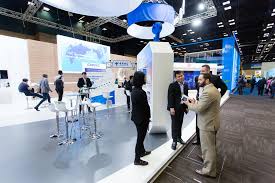From the fast-paced arena of exhibits, in which development and ingenuity converge, sustainability has come about as a leading concept shaping the way forward for the marketplace. From minimizing waste to decreasing carbon pollutants, exhibitors are increasingly embracing eco-friendly techniques to produce impactful and environmentally accountable experience. Let’s explore useful techniques for including sustainability into every factor of exhibition technology (mässteknik) (mässteknik) and setup.
1. Lasting Procurement: Picking Moral and Eco-Warm and friendly Vendors
The journey towards environmentally friendly exhibitions starts off with conscientious procurement procedures. When deciding on vendors and suppliers, prioritize individuals who prioritize sustainability, offering eco-warm and friendly products and services. Search for certifications including Woodland Stewardship Authority (FSC) for wooden merchandise or Acceptable Industry accreditation for ethical finding of materials.
Additionally, look at the lifecycle impact of items and resources, from manufacturing to fingertips. Select reusable, recyclable, or biodegradable alternatives anytime you can, and minimize solitary-use things. By partnering with eco-conscious vendors, exhibitors can reduce their environment footprint when marketing accountable usage and creation.
2. Waste materials Decrease and Recycling: Shutting down the Loop
Waste management is really a critical element of lasting displays, necessitating meticulous planning and rendering. Apply a comprehensive spend lowering technique that prioritizes spend prevention, reuse, and recycling during the entire exhibition lifecycle.
Give clearly marked recycling stations and motivate attendees to segregate waste responsibly. Take into account partnering with waste administration firms to aid the collection and handling of recyclable materials. Check out innovative remedies for example composting natural and organic squander and repurposing supplies for potential exhibitions or local community assignments.
Furthermore, reduce wrapping waste materials by picking eco-helpful packaging supplies and following a packing-free method wherever attainable. By closing the loop on squander administration, shows can significantly reduce their ecological impact and give rise to a circular economic climate.
3. Transport and Logistics: Adopting Lasting Freedom
Transport and logistics enjoy an important part in the enviromentally friendly footprint of shows, notably regarding energy intake and pollutants. To reduce carbon emissions, put in priority sustainable transport choices for both exhibitors and attendees.
Encourage carpooling, consumption of public transit, and cycling or jogging to the place anytime you can. Give benefits including reduced or cost-free public transportation passes by to incentivize eco friendly travelling. Moreover, offset unavoidable emissions through co2 offset programs or investments in sustainable energy jobs.
In addition, optimize logistics surgical procedures to reduce gasoline usage and emissions. Consolidate deliveries, optimize routes, and select service providers with a dedication to sustainability. By adopting environmentally friendly flexibility options, shows can minimize their environment affect whilst endorsing eco-helpful vacation behaviours.
4. Local community Engagement: Impressive Eco friendly Methods
Sustainability can be a collective endeavor that needs lively engagement and involvement coming from all stakeholders, such as exhibitors, attendees, and native communities. Teach and empower stakeholders to adopt eco friendly techniques both during and past the exhibition.
Organize training courses, workshops, and entertaining trainings to raise recognition about ecological problems and show off lasting options. Motivate exhibitors to incorporate sustainability to their items, solutions, and advertising communications, inspiring good change across market sectors.
Furthermore, team up with nearby residential areas to leave a long lasting legacy beyond the exhibition length. Support community projects including plant placing, ecological cleanups, or academic programs dedicated to sustainability. By encouraging a feeling of combined responsibility, exhibits can enhance their affect and generate important change on the grassroots degree.
Summary
In summary, sustainability is not merely a pattern but a essential worth that need to be integrated into every factor of exhibition preparation and execution. By taking on eco-pleasant techniques like environmentally friendly procurement, waste reduction and recycling, eco friendly transport, and local community engagement, displays can minimize their enviromentally friendly footprint and encourage optimistic modify. With each other, let’s browse through the path to lasting exhibitions and make a much brighter, eco-friendly long term for generations into the future.
